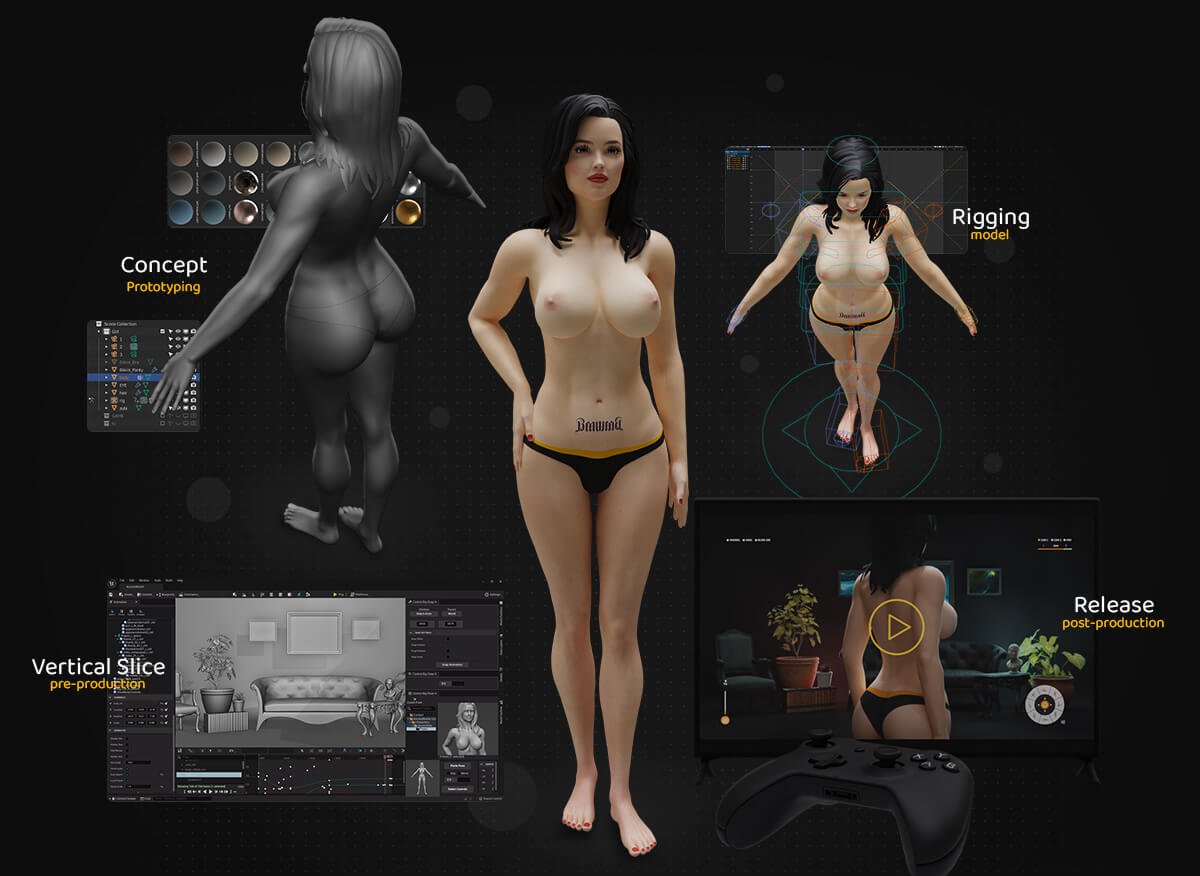
Hentai is a sexually explicit or pornographic subgenre of Japanese animation styles anime and manga.
Anime is often characterized by colorful graphics, vibrant characters, and fantastical themes.
Manga, on the other hand, refers to Japanese comics. Like anime, manga covers a wide range of genres, and is often characterized by its distinct art style, which typically features large, expressive eyes, small mouths, and simplified facial features. Manga can be serialized in magazines, released as standalone volumes, or adapted into anime series or films.
Hentai manga, also known as adult manga or erotic manga, often depicts sexual acts or fetishes that are considered taboo or unusual.
Unlike most anime and manga, which are generally suitable for all ages or specific age ranges, hentai is intended for adult audiences only and often includes depictions of sexual acts or fetishes.
Toshio Maeda is a Japanese manga artist and creator who is best known for his contributions to the hentai genre of manga. Maeda’s most famous work is the manga series “Urotsukidoji: Legend of the Overfiend,” which was first published in 1986 and went on to become one of the most influential and controversial works in the hentai genre.
Maeda’s art style is known for its extreme and graphic depictions of sexual acts and violence, and his work has been both praised and criticized for its provocative and controversial themes. Despite this, Maeda has continued to be a prominent figure in the manga and anime industries, and his work has had a significant impact on the development of the hentai genre in Japan.
Related Read: The Best Sex Simulators and Hentai Sex Games
What is hentai tentacle porn?
Tentacle erotica or hentai tentacle porn, also known as “tentacle rape,” is a type of pornography that is primarily found in Japan. It is a blend of traditional pornography with elements of bestiality, horror, or science fiction.
Tentacle erotica has appeared in animated films and manga, with examples dating back to the 1980s.
Some of the earliest examples of tentacle erotica were woodblock prints depicting women being violated by octopuses. The most famous of these is The Dream of the Fisherman’s Wife, an illustration from the 1814 Hokusai book Kinoe no Komatsu. It depicts a female diver, known as an ama, in a state of sexual ecstasy as two octopuses pleasure her.
While the painting itself does not have a direct political significance, it is part of a larger artistic movement in Japan during the Edo period (1603-1868) that emphasized eroticism and sexuality in art. This movement was largely driven by the relaxation of censorship laws and the growth of a thriving commercial art market in Japan.
Some scholars argue that the popularity of erotic art during the Edo period reflects a broader societal interest in sexuality and the human body, which was not necessarily constrained by traditional moral or religious values. Others suggest that this art form served as a form of political commentary, reflecting a rejection of the strict social hierarchy and political control of the Tokugawa shogunate.
Is hentai a fetish?
As mentioned above, hentai is a term used to describe a genre of Japanese animated or illustrated pornography. While some people may have a fetish for hentai, it is not inherently a fetish in and of itself.
A fetish is typically defined as a sexual fixation on a specific object, body part, or activity that is necessary for a person’s sexual arousal and satisfaction. However, enjoying hentai does not necessarily mean that someone has a fetish for it.
Anime vs manga
Both anime and manga have become increasingly popular around the world in recent years, with many fans drawn to their unique storytelling styles and visually stunning artwork.
Anime and manga are both forms of Japanese entertainment, but there are several key differences between the two:
- Format: The primary difference between anime and manga is their format. Manga refers to Japanese comics and graphic novels, while anime refers to Japanese animated TV shows and movies.
- Presentation: Because anime is animated, it can incorporate more dynamic visuals and special effects than manga. Anime can also include voice acting, music, and sound effects to enhance the storytelling.
- Length: Manga series can last for many years, with some running for dozens of volumes. In contrast, anime series are typically shorter, with a typical season consisting of 12-24 episodes.
- Availability: Anime is often more widely available outside of Japan, as it can be easily dubbed or subtitled in other languages. Manga, on the other hand, can be more difficult to access outside of Japan, as it often needs to be translated and printed in physical form.
- Content: While both anime and manga can cover a wide range of genres, there are some stories that are more commonly found in one format than the other. For example, manga may be more likely to focus on complex and nuanced storylines, while anime may feature more action and spectacle.
Despite these differences, anime and manga are often closely related. Many anime series are adaptations of popular manga, and some manga series are created specifically to promote upcoming anime. As a result, anime and manga can be seen as different forms of the same storytelling medium.
- Hentai Porn
- March 31, 2023

















